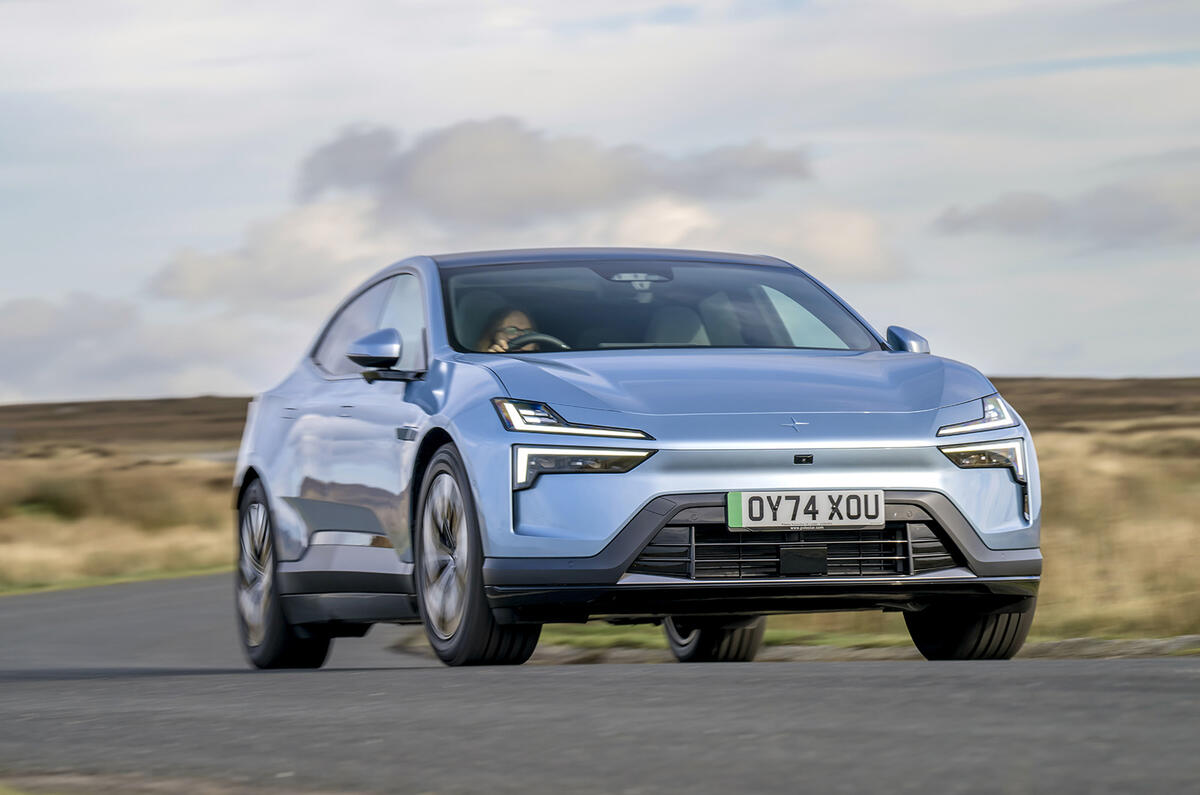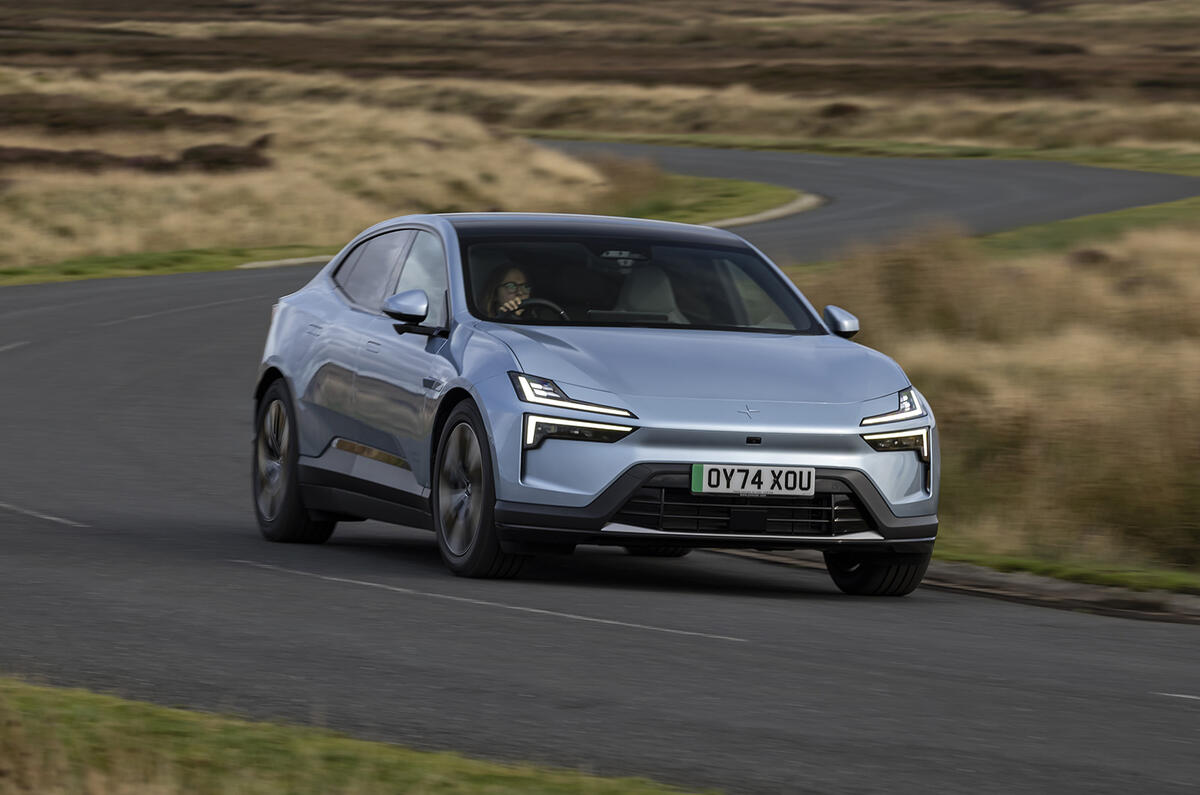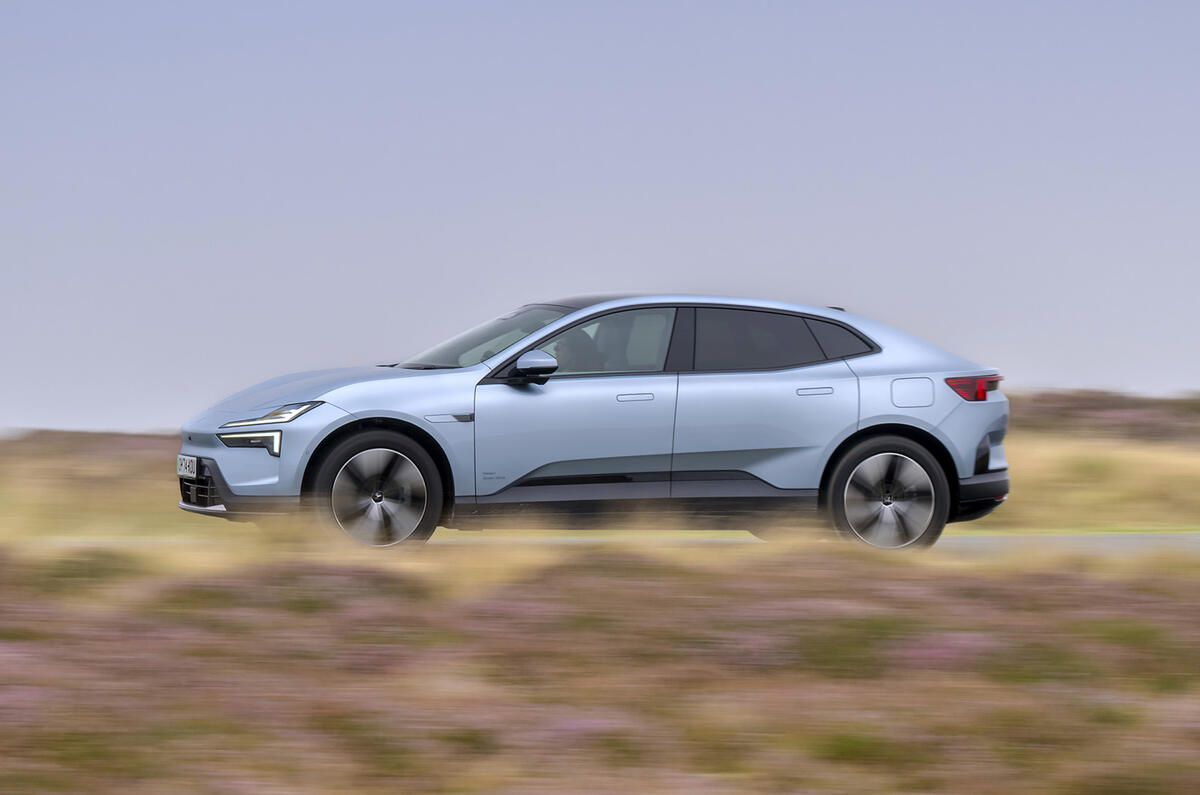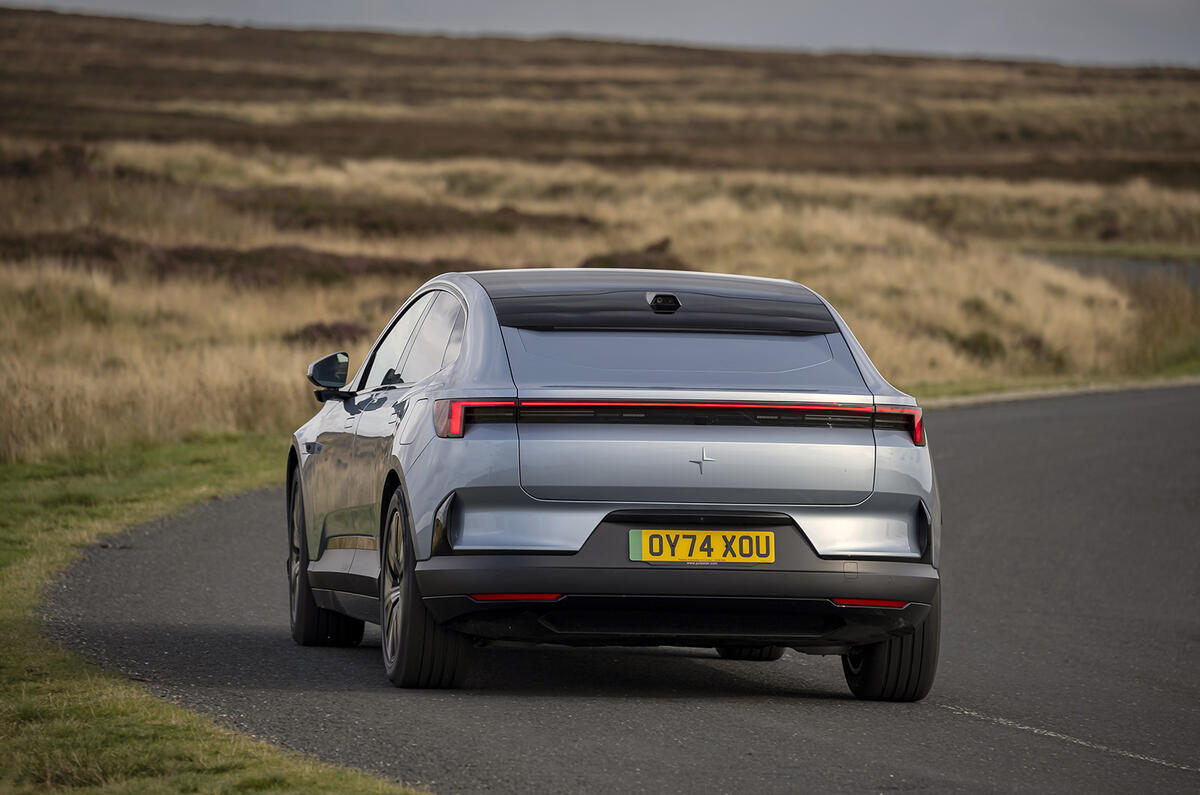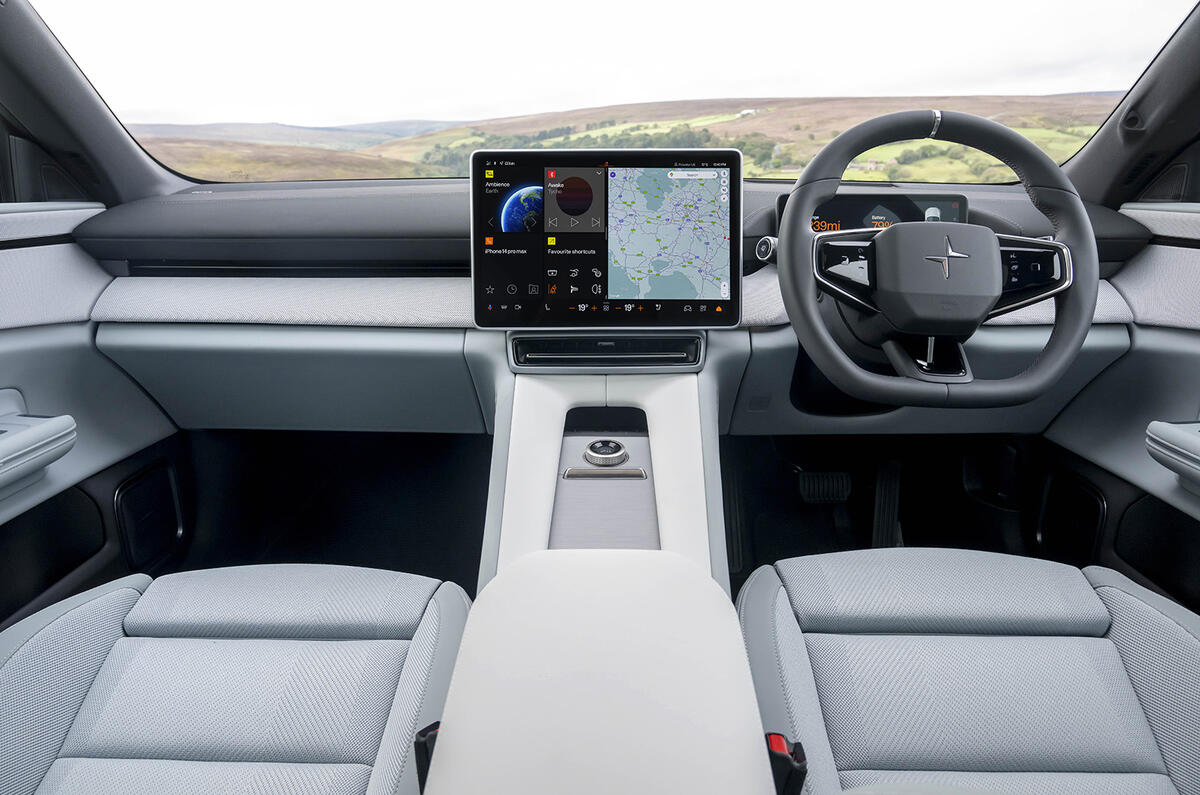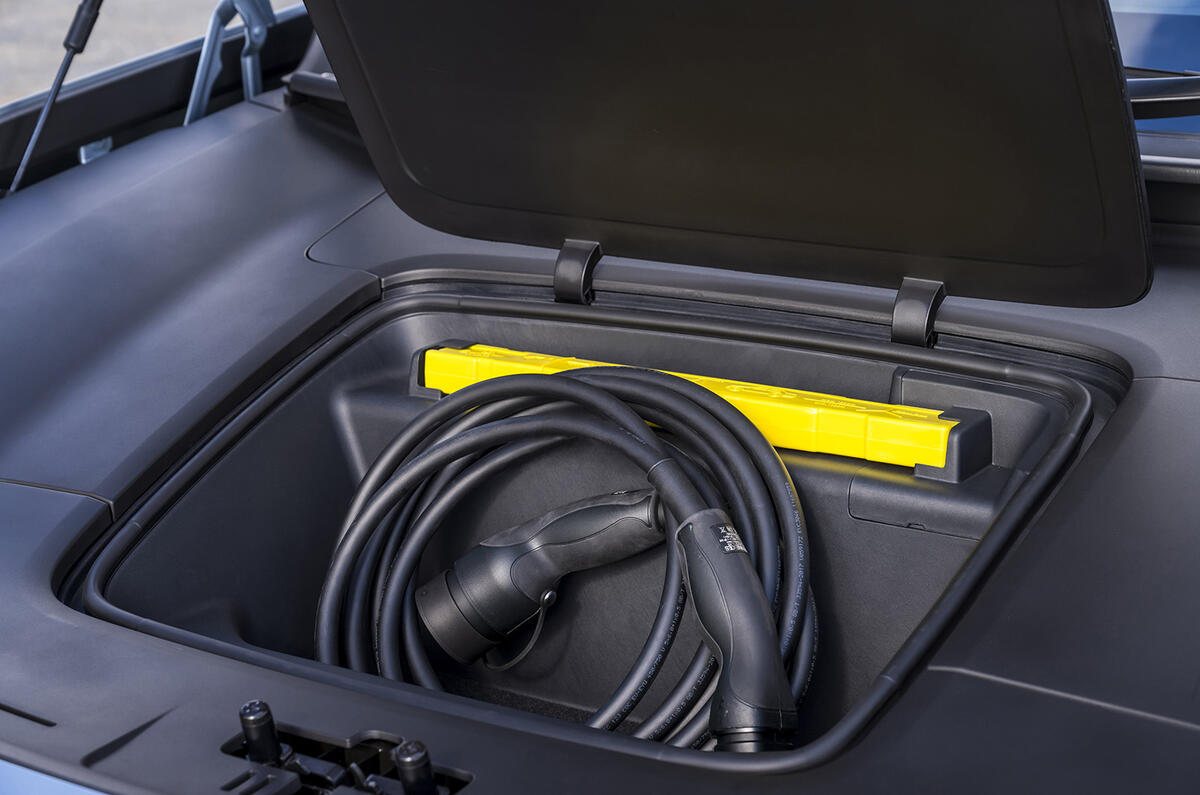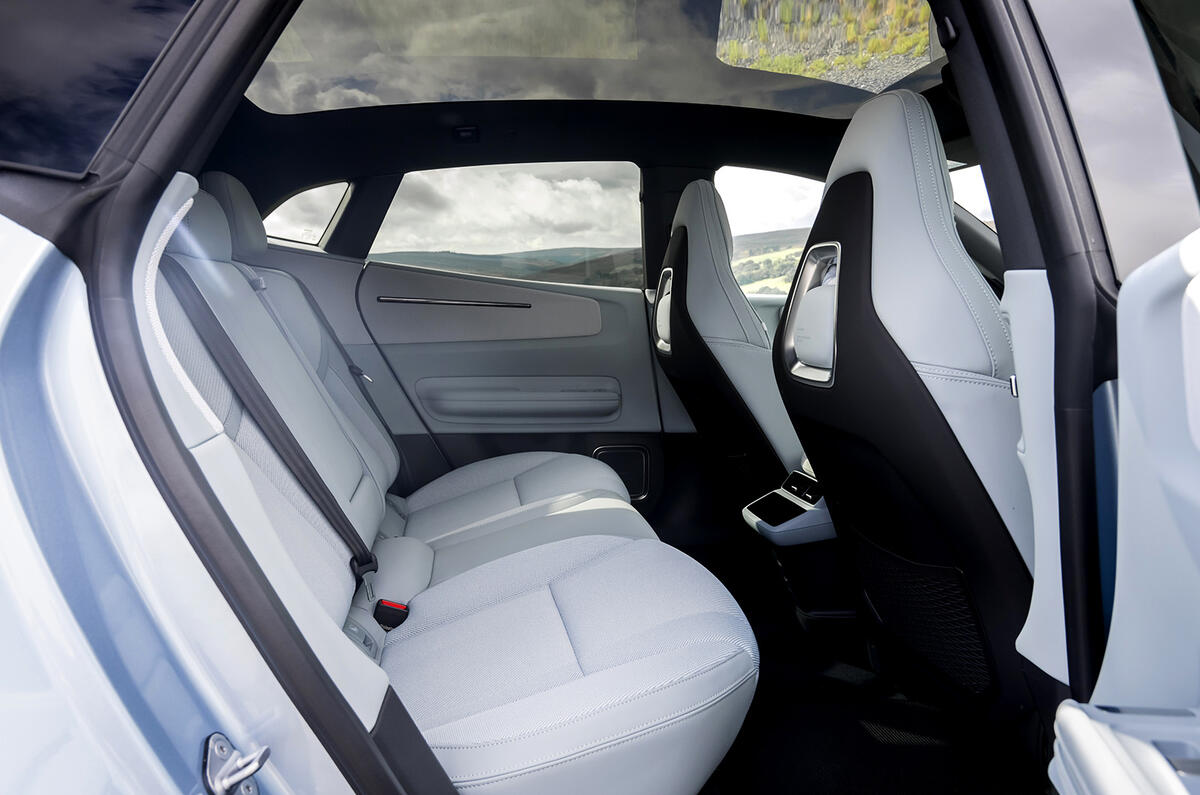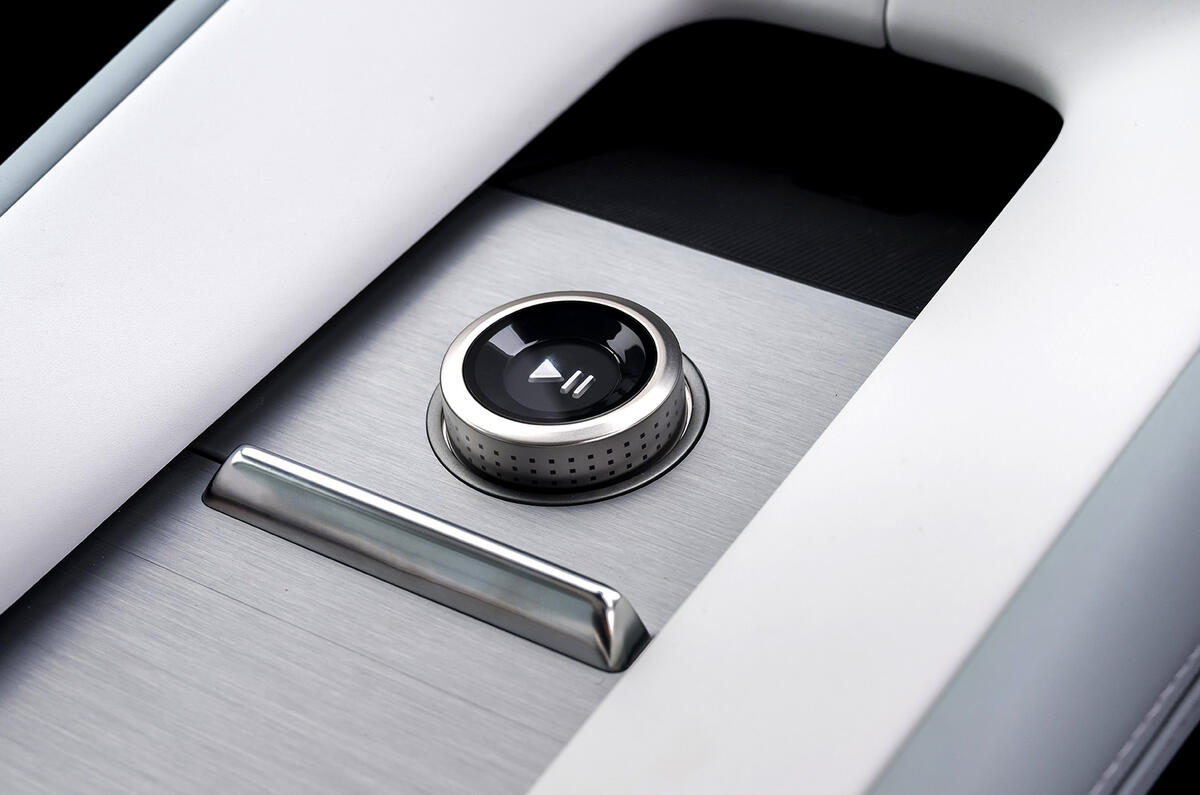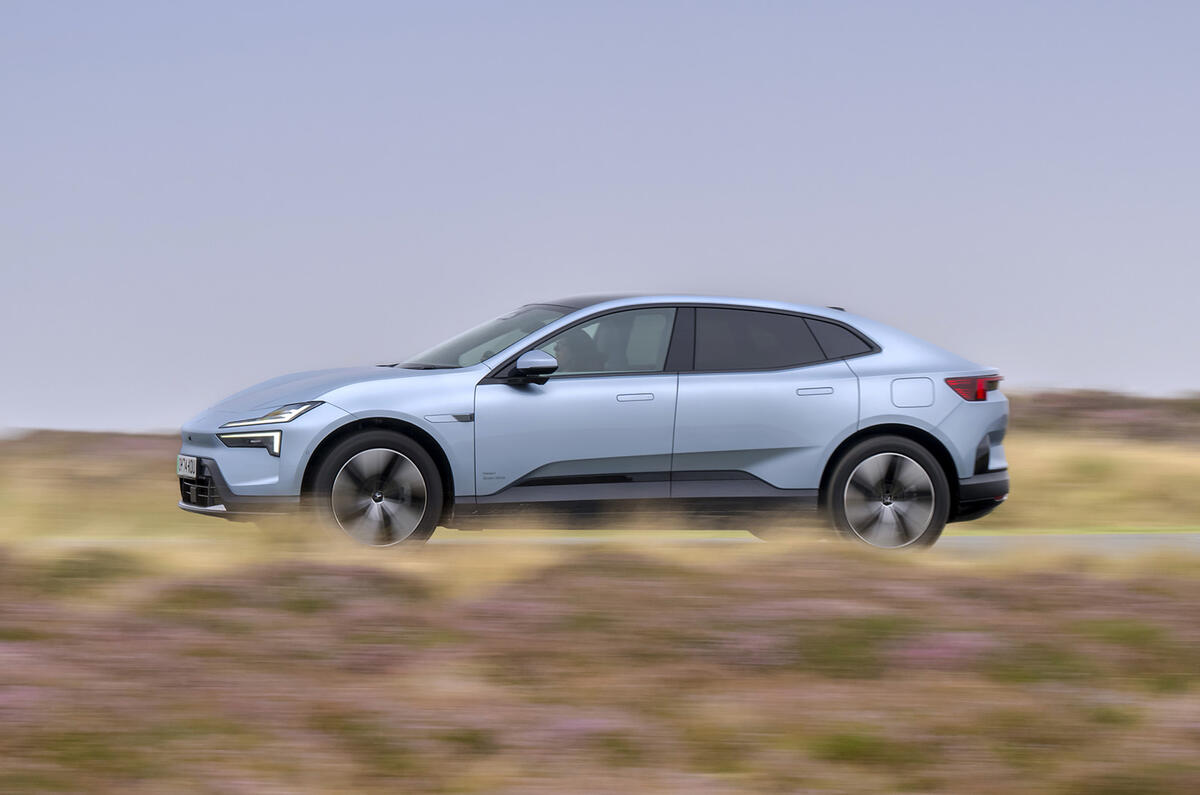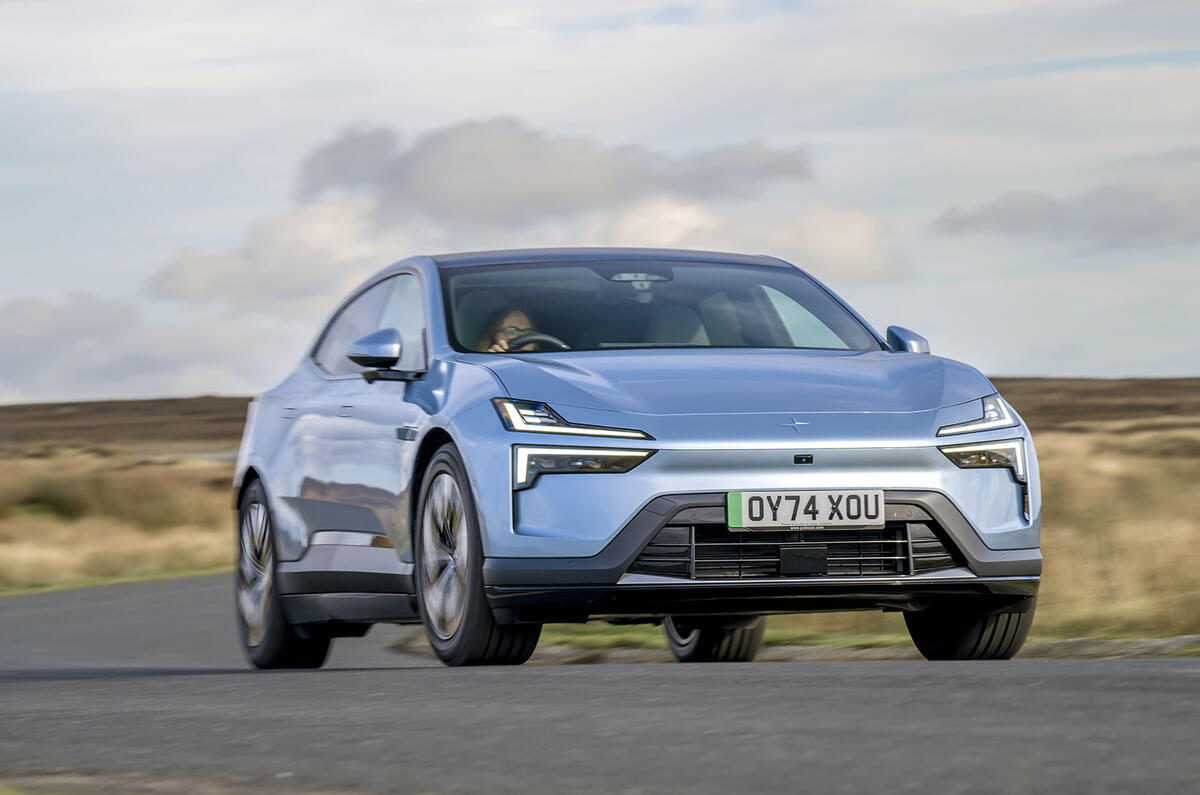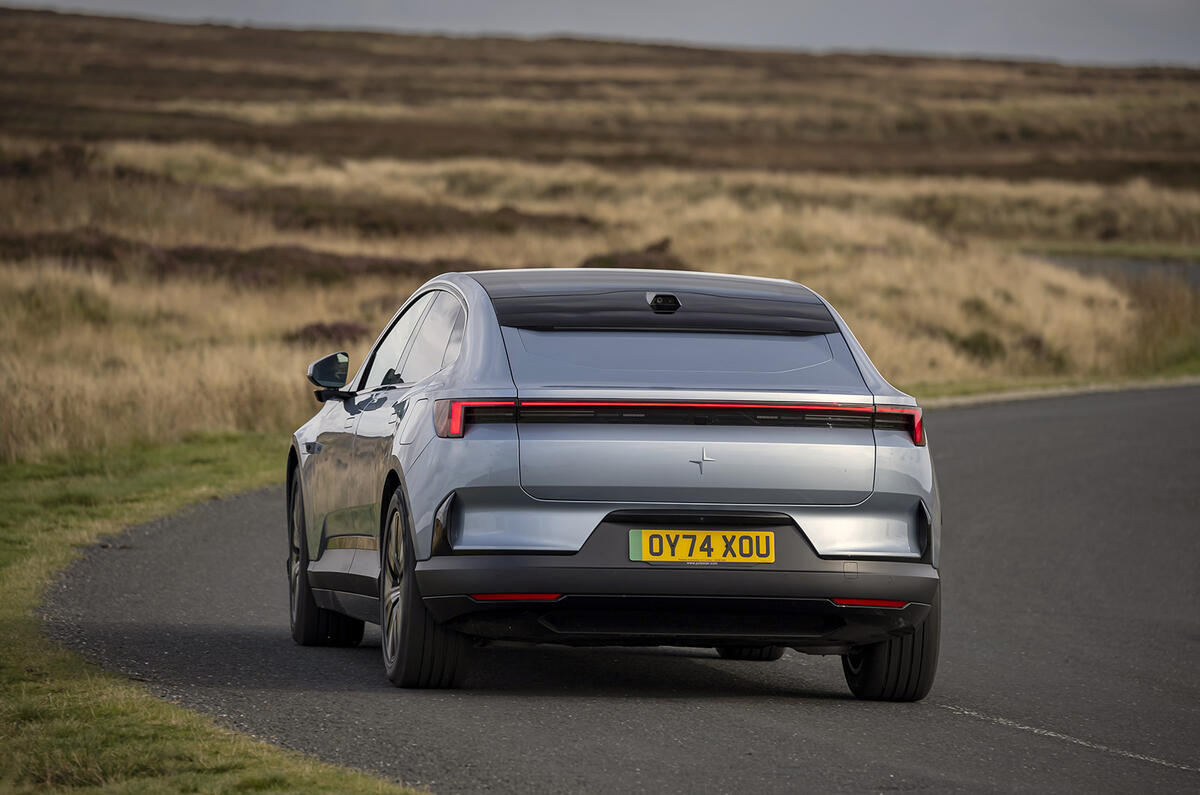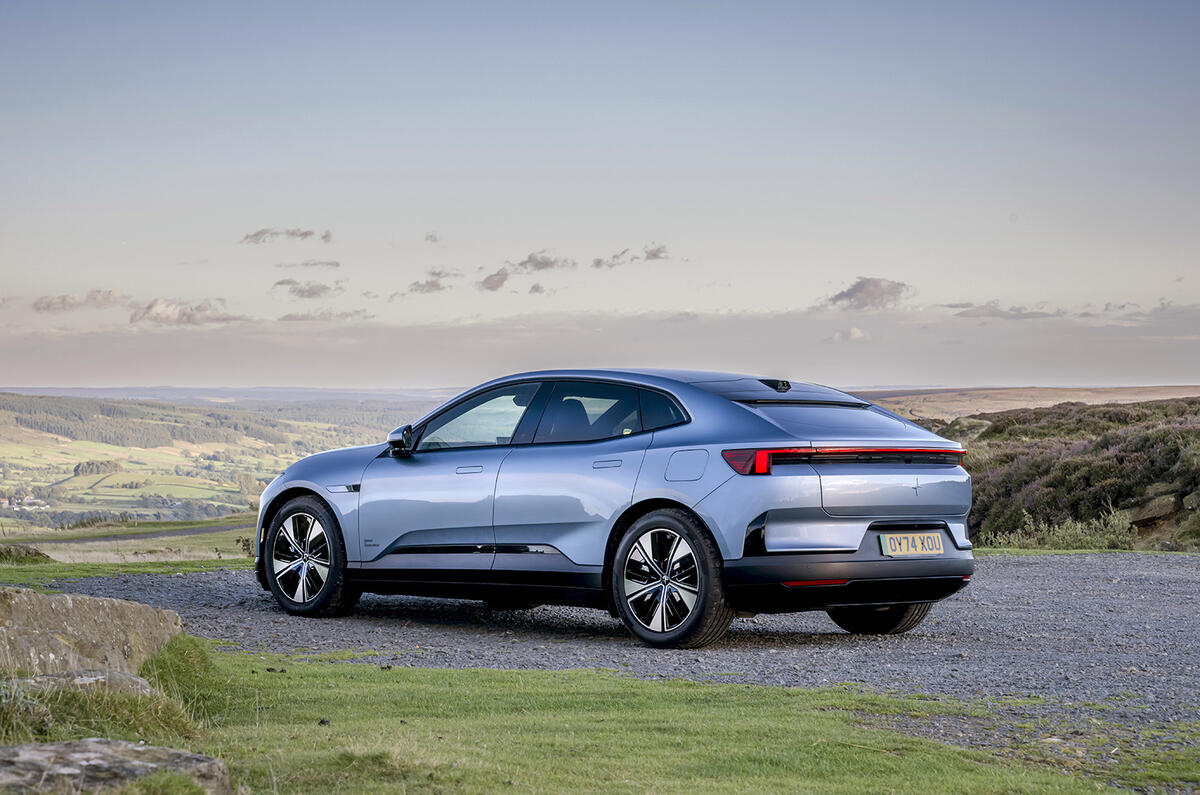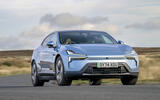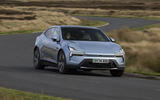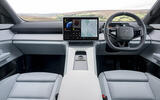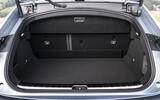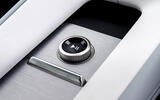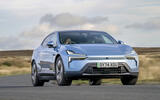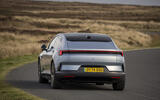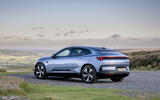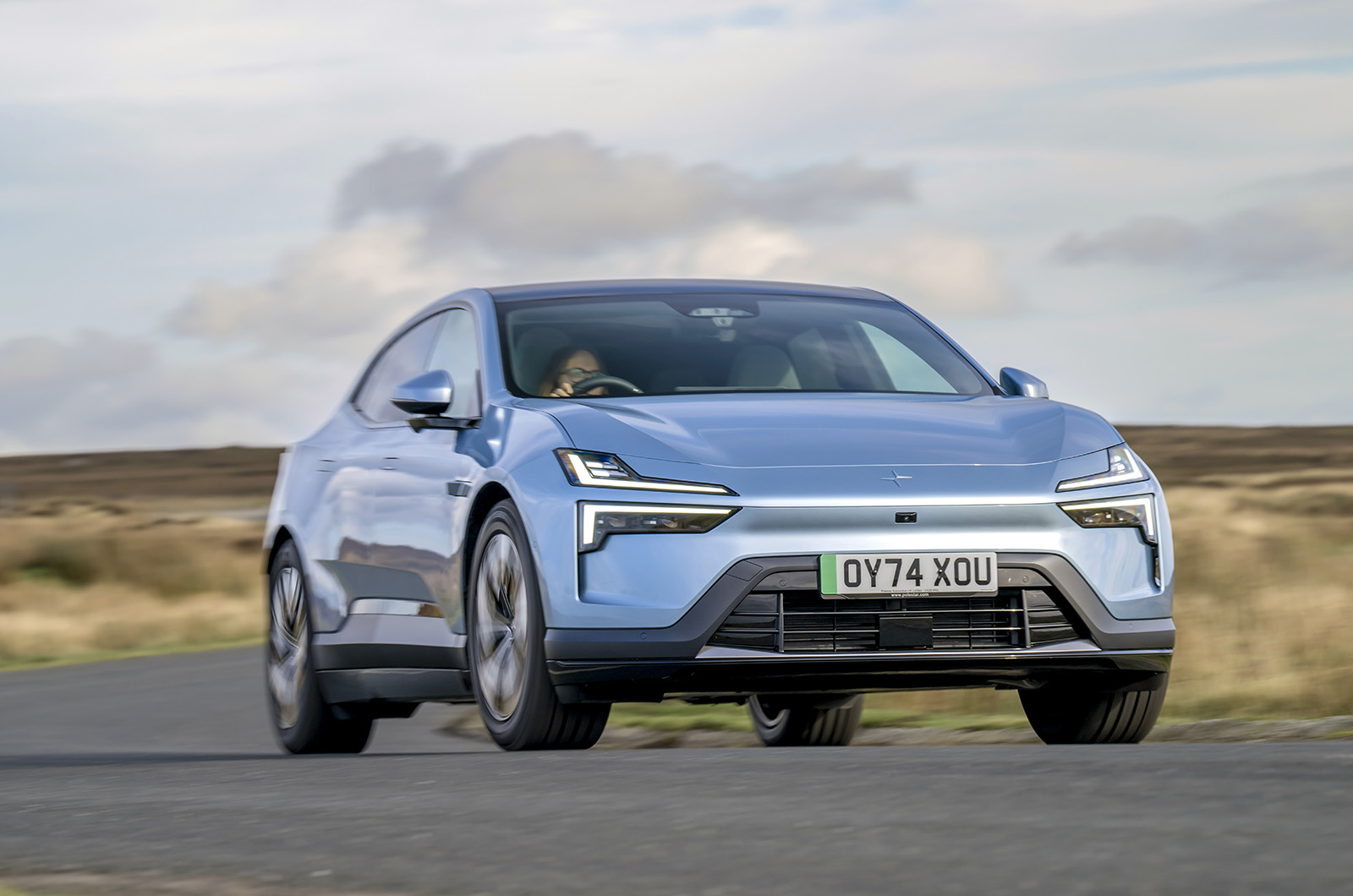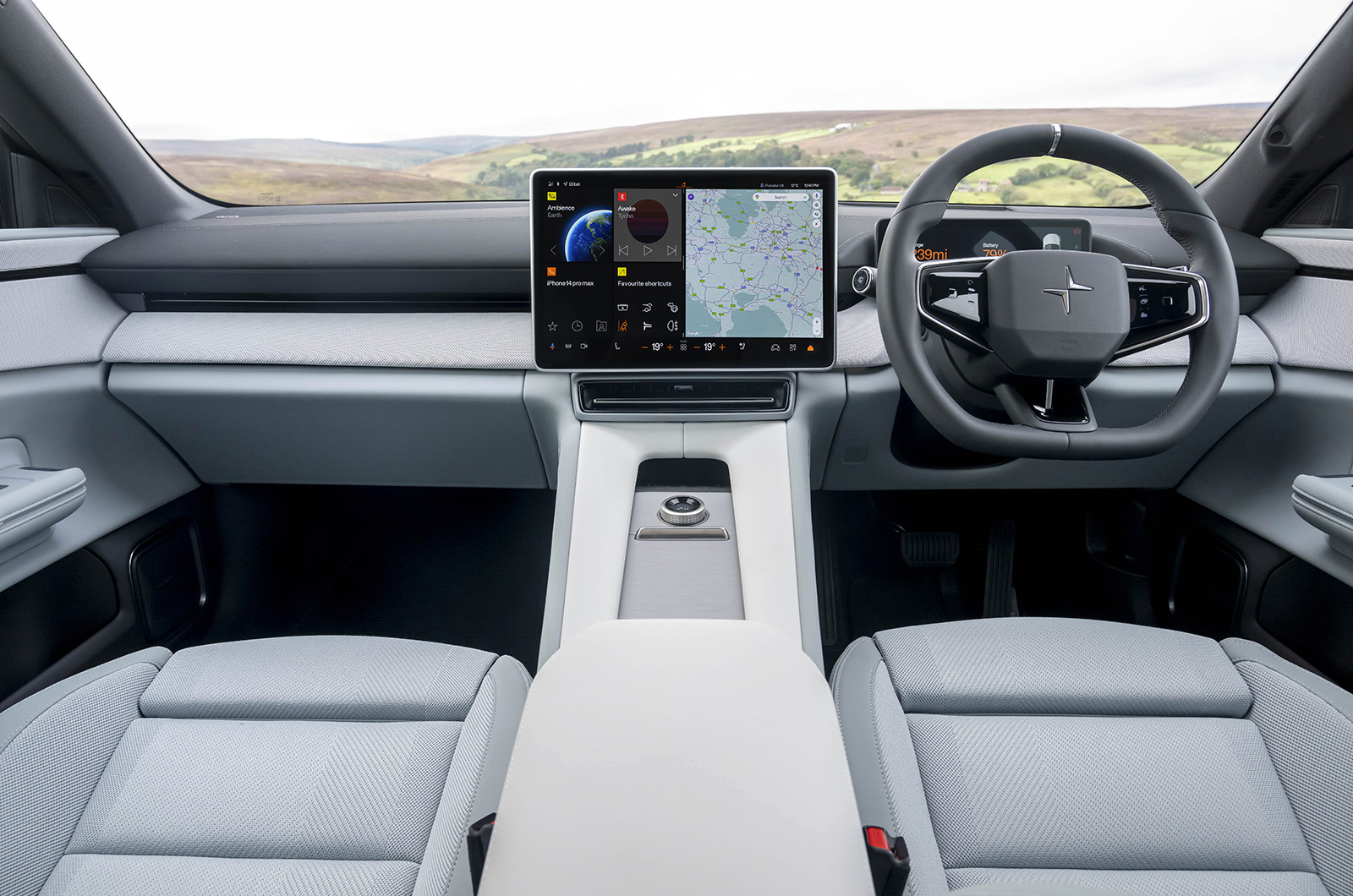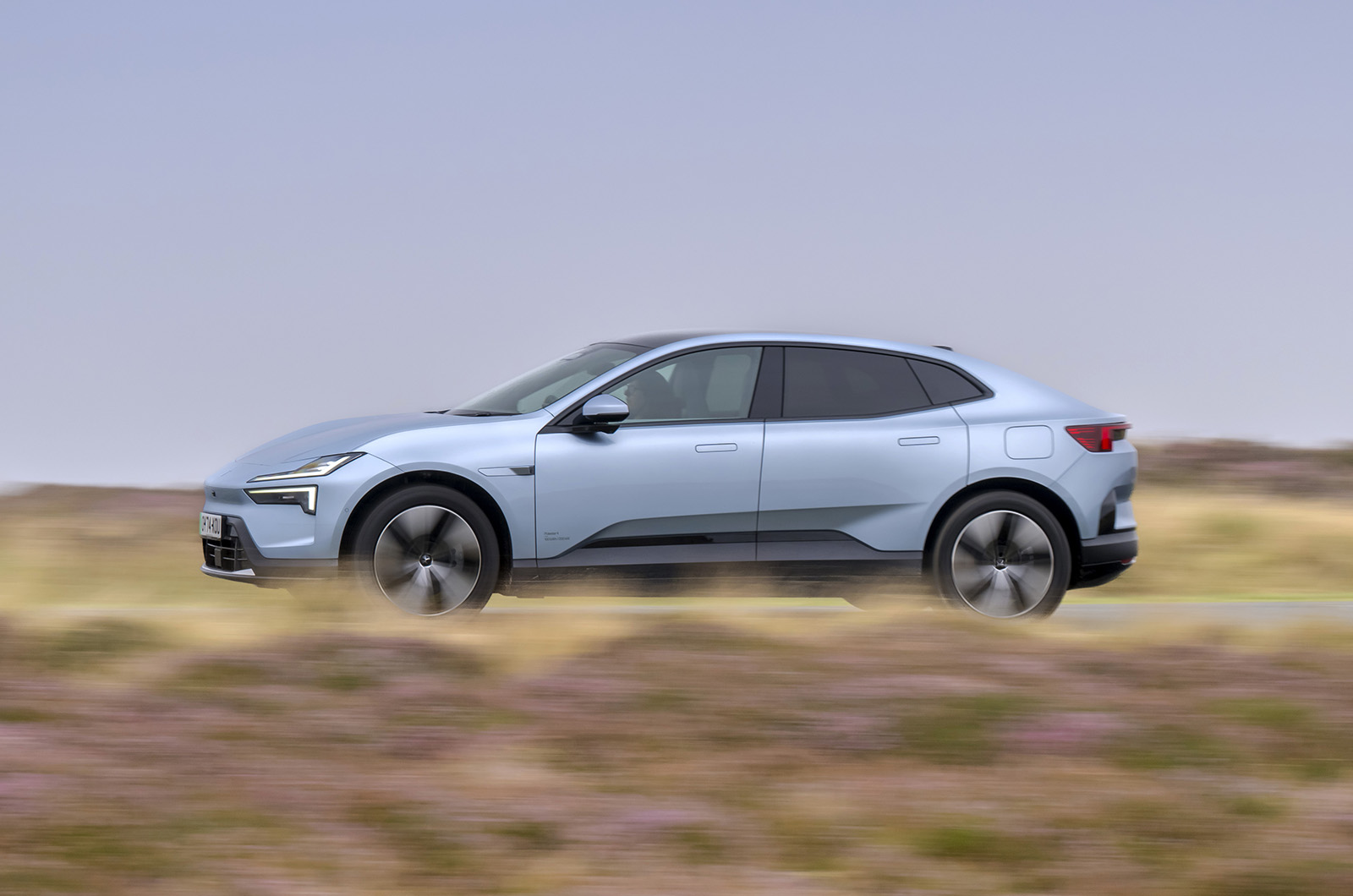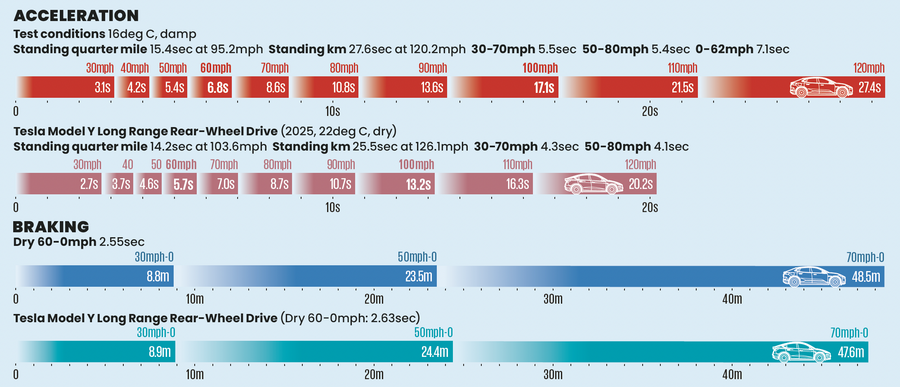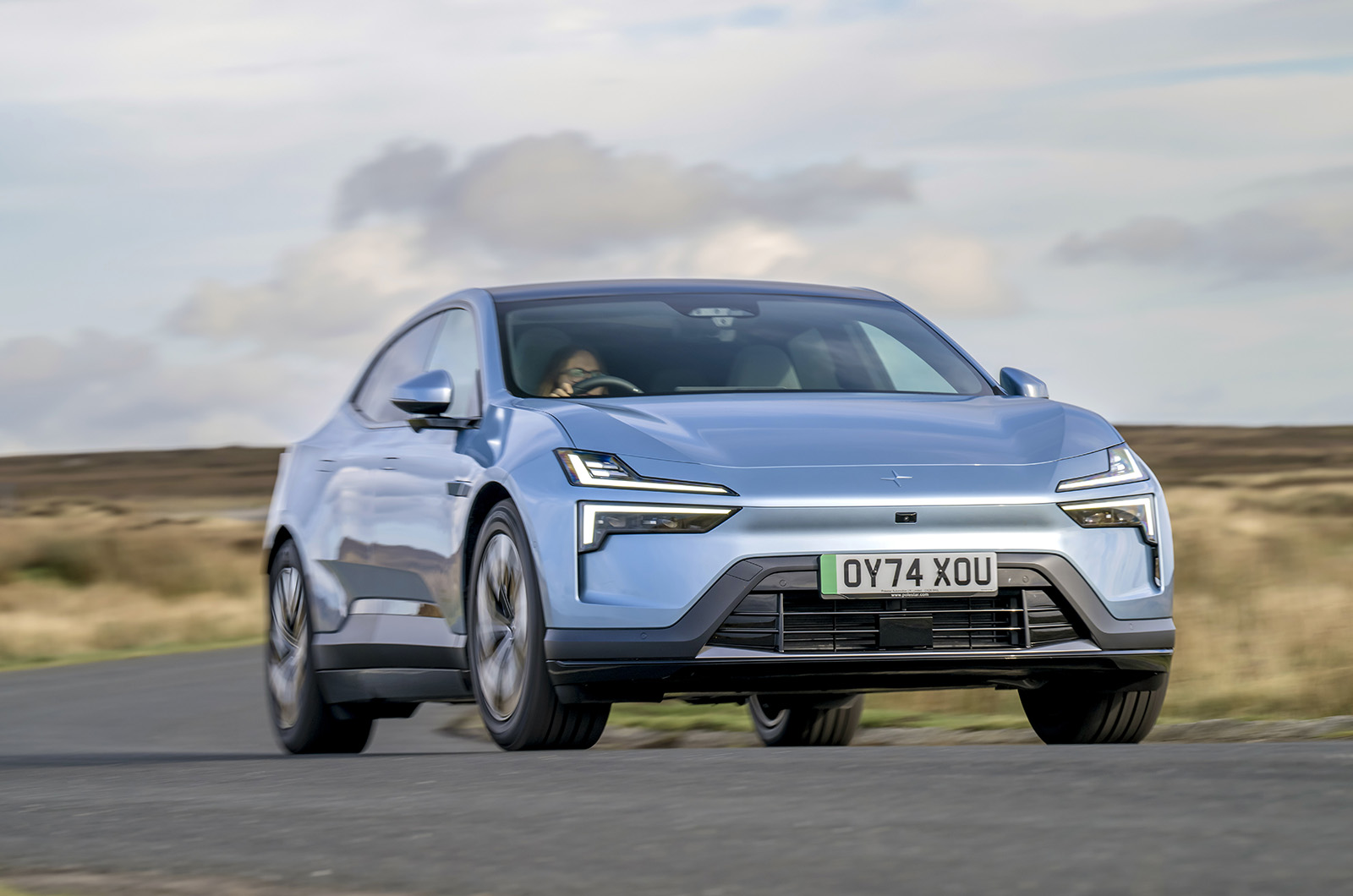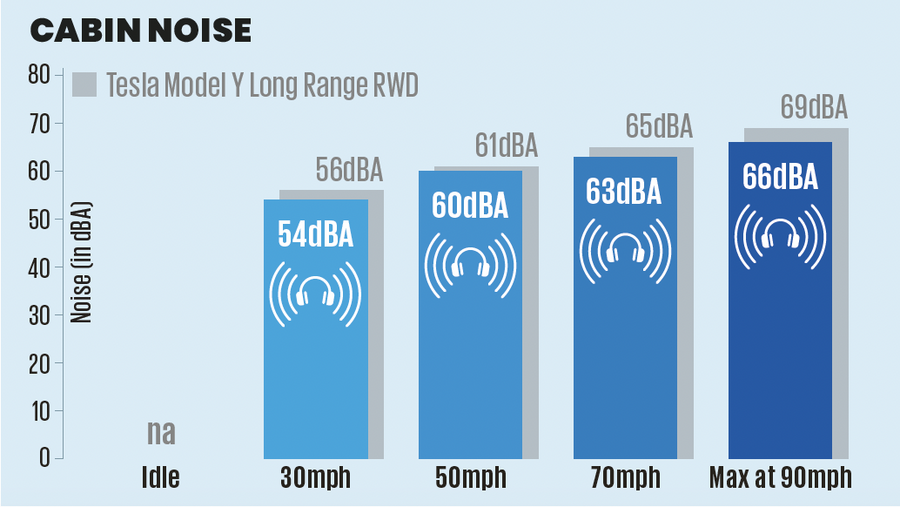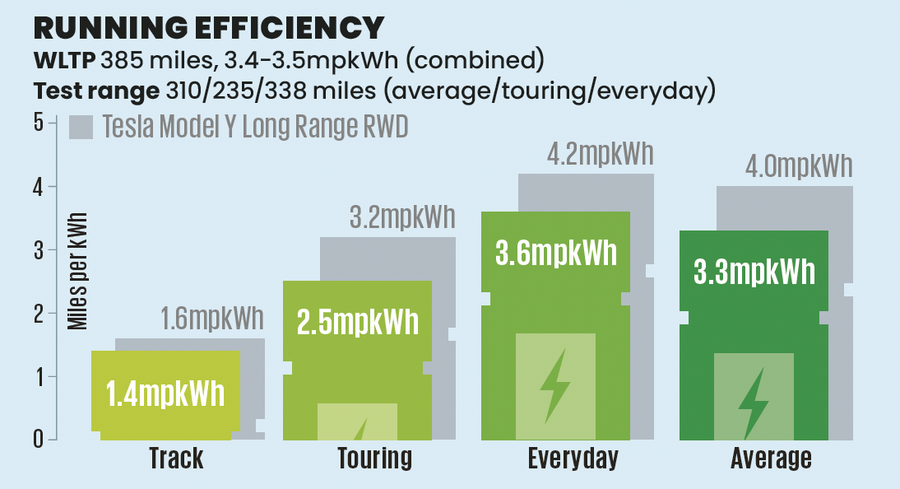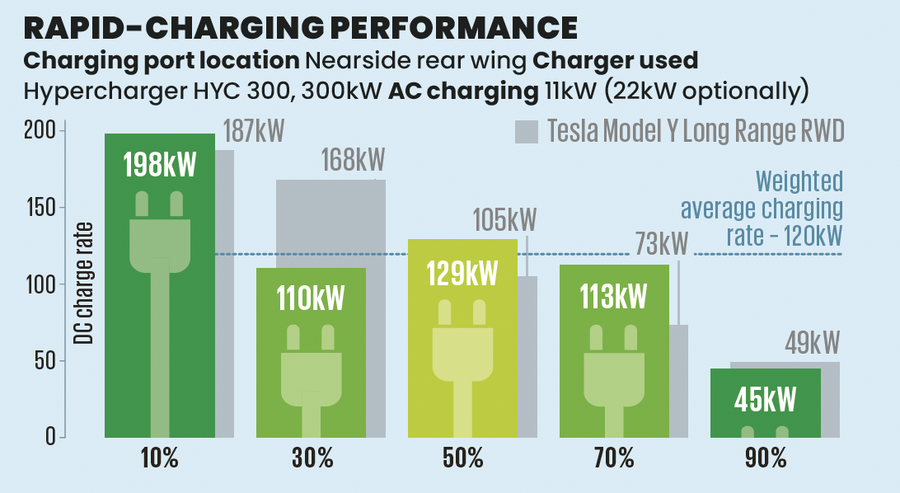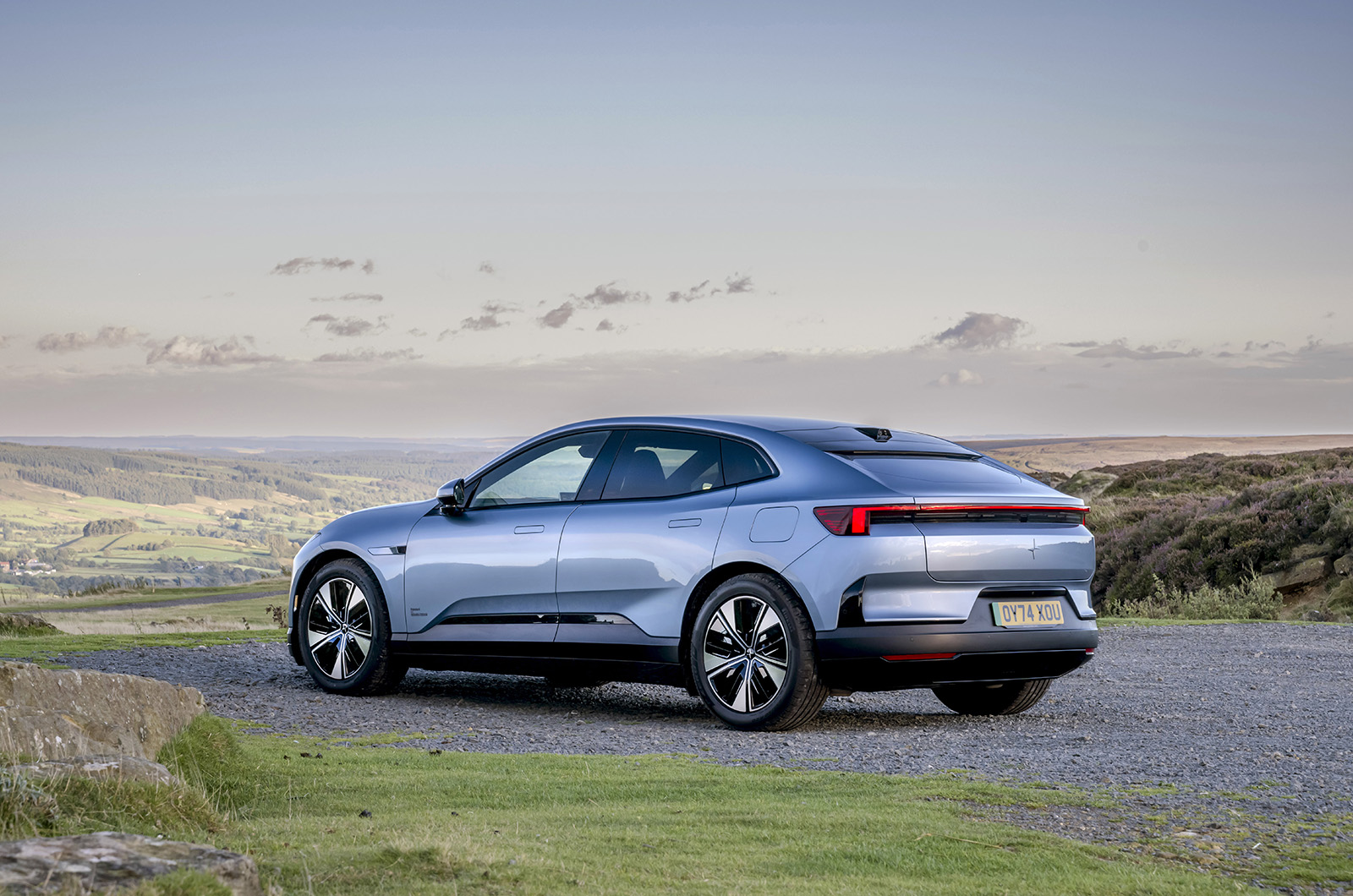Slide into the driver’s seat and there’s a real sense that this is more coupé than SUV, owing to the geometry of the driving position – the relationship between hands, backside and feet – and the lowish scuttle ahead of you. You still sit higher than in ‘classic’ saloons or coupés, but not by much.
The dashboard has strong horizontal lines, complete with hidden vents that you adjust via the touchscreen (a frustrating way of doing it, all testers agreed). Thankfully, there’s a simple instrument display behind the steering wheel, and if you add the Plus Pack, as our car had, you also get a head-up display.
The cabin’s materials palette is made up of some rather lovely textured textiles, or nappa leather if you prefer. There’s certainly that unmistakable, restrained, Scandi-chic feel in the ambience, and it feels refreshingly different from the obvious rivals from Germany – which is another selling point for any Polestar fan who may well revel in a car that’s anything but the norm.
As for comfort, fine seats have long been part of the Volvo-Polestar equation, and the 4 is no different. The padding is a little softer than you might expect, and the bolstering is a touch less generous than might sometimes be required of what is potentially a 500bhp-plus car; but for long drives and everyday use, these are superb and broadly adjustable.
The simplicity of the driving environment is also welcome, although this approach does slip into functional issues: there is no physical control to adjust the mirrors, for example, and the indicator stalks don’t always feel reassuringly sturdy. But does it all feel £60,000-premium? Mostly, yes.
There is at-least reasonable headroom in the second row, at 880mm (920mm for the Model Y; 930mm for the Macan Electric), although not quite enough for particularly tall adults to sit without feeling a little enclosed, with the header rails dropping down on either side. The lack of a rear screen certainly adds to the feeling that it is slightly enclosed and dark, although there’s good forward visibility, no so risk of it feeling outright claustrophobic.
However, from the driver’s perspective it’s just annoying not to have a direct view out of the back of the car. While the rear-view camera that makes up for the solid metal shell at the back is high-definition, it’s not as crisp or sharp as a regular mirror, and you can’t use it like a mirror to judge distance by slightly moving your head. It’s also problematic if you happen to wear glasses to correct short-sightedness, because you will need to look over your specs to focus on the screen, whereas with a mirror your focus is farther away.
You can recline the back seats, but doing so doesn’t create any more space (although it does slightly lessen the impact for the Polestar’s higher, EV-typical floor). However, overall, and as in the front of the car, material ambience is plush and luxurious, and for adult passengers of average height the cabin is roomy enough. The hatchback boot has a decent 526 litres of space, including 31 litres under the floor, so there’s some useful SUV-ness in the mix. A 15-litre frunk adds further storage and is useful for the charge cable.
Infotainment - 3.5 stars
The car’s landscape touchscreen uses a reskin of the infotainment software from the Volvo EX30, and there are some neat touches to it. The icons are sizable, and the adaptive dynamic functions light up orange when they’re activated, so they’re not difficult to hit and it’s easy to see how the car is set up. The climate controls are also permanently displayed along the bottom of the screen.
Configurable shortcuts on the home page mean lane keeping assistance, regenerative braking modes and more can all be a single finger prod away. The inbuilt Google Maps sat-nav is also very good, and you can have it showing on the driver display as well as the main screen if you choose.


